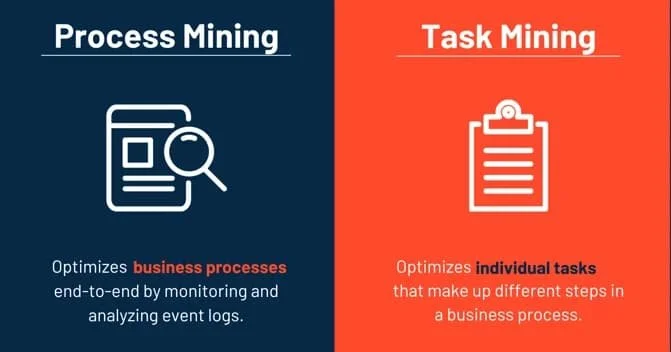Smart Lean: Unlocking Underutilized Talent with AI
Free Your Teams to Focus on What Matters
A manager is stitching the fifth “final” deck at 10 p.m. A clinician retypes the same visit in two systems. An IT lead spends the morning in standups while incidents age. A banker hunts for final_final(3).xlsx across drives. None of this is why you hired them.
The gap between people’s highest-value capabilities and the low-value tasks that soak up their day is also called talent misallocation in Lean terms. The stakes are real: low employee engagement costs the global economy US$8.9 trillion.* And while generative AI is now mainstream (75% of knowledge workers use it), tools alone don’t fix the issue.** Pair AI with Lean, remove the waste, and shift time to high-judgment work.
Across industries, the pattern is consistent: free time, reallocate it, and measure it so people spend more of their day on the work that truly matters. Results follow when we redesign the workflow around value.
* Gallup, “State of the Global Workplace 2024” ** Microsoft WorkLab, “AI at Work Is Here. Now Comes the Hard Part” 2024
Detecting Invisible Inefficiencies
Ask yourself the following questions:
Are employees hunting for documents, data, or the right person? (M)
Do requests or tickets bounce between teams before resolution? (T)
Is data being reentered across systems due to poor integration? (T&M)
Are workflows cluttered with redundant steps or unclear handoffs? (T&M)
These patterns rarely appear in dashboards, but they drain time and focus.
To surface them, use:
Value Stream Mapping to trace work end-to-end.
Process Mining to spot detours and rework.
Task Mining to capture user-level friction like toggling, scrolling, and copy-pasting across apps.
Employee Interviews or Shadowing to expose hidden Motion waste.
Once these issues are visible, streamline or eliminate them before considering automation. Lean first, then AI.
Measuring the Impact: Top-of-License Time (ToL%) as a KPI
While technology can automate busywork, measurement shows whether expertise is actually being freed. A powerful KPI is Top-of-License Time (ToL%): The share of an expert’s week spent on core, high-skill tasks (diagnosis, underwriting, resolution) rather than low-value admin (documentation, re-entry, hunting files, status updates). There's no known universal baseline for ToL% because it's a highly context-dependent KPI, varying significantly based on industry, specific job roles, organizational strategy.
For frontline operations like contact centers and service desks, pair ToL% with a practical companion metric: agent occupancy (time on live contacts + after-call work).. Many leaders target ~75–85% occupancy*. It’s not the same as ToL%, but it helps ensure expert queues stay productive without pushing teams into burnout.
* Balto, “Call Center Agent Utilization—Benchmarks & Tips” 2025
Root Causes: The Hidden Drag Slowing Your Service Velocity
Transport and Motion waste often show up as delays, rework, or redundant effort, but their causes lie deeper in how work is structured and systems are connected.
Here are the most common sources of operational drag:
Fragmented Systems
Siloed apps, duplicate databases, and missing API bridges force teams to re‑enter data, chase files, or hop between platforms, digital Transport in every click.
Cluttered Processes
Legacy approval chains, unclear handoffs, and “just‑in‑case” steps create detours and rework, multiplying Motion and slowing flow.
Manual Workarounds.
When integrations fail or tools can’t talk, employees stitch together spreadsheets, copy‑paste data, or swivel from screen to screen, creating shadow workflows that drain efficiency.
Hidden Knowledge Silos
Critical information stuck in inboxes or tribal memory drives staff to hunt for answers and the right person, shifting focus from value‑adding work to search and clarification.
Identifying these issues is the first step to removing unnecessary movement between roles and within them. The payoff: less friction, more capacity, and smarter flow driven by Lean and AI.
AI Levers That Free Time
Lean thinking pinpoints everything that doesn’t create value; Artificial Intelligence supplies the power tools to erase it at scale. The aim isn’t to push waste through the pipe faster. It’s to make the pipe shorter, straighter, and friction-free.
2. Route and align (protect expert time, match skill to demand)
AI triage and routing (intent + complexity): classify requests at intake; send simple issues to self‑serve and complex ones to the right owner the first time.
Skills based routing and scheduling: match cases to people with the right capabilities; shape staffing to demand peaks without burnout.
Outcome: less queue ping‑pong; faster time to right owner; managers spend more time coaching than routing.
3. Accelerate high value work (amplify experts, not just speed admin)
Ambient documentation (AI scribing): draft notes, summaries, and updates so clinicians and advisors review rather than author from scratch.
AI copilots for drafting and research: produce first drafts, meeting summaries, and briefs; surface the right facts at the right moment.
Decision support and guardrails: structured prompts, checklists, and agent guardrails that encode SME judgment into standard work.
Outcome: more top of license time; higher quality with less rework.
The AI toolkit in three tight buckets
1. Deflect and self serve (remove low value demand)
AI knowledge assistant (RAG): turn SME answers into reusable guidance; resolve repeat questions in chat, portals, or inside daily tools.
Micro automations (end to end tasks): handle password resets, access requests, profile updates, and other FAQs end‑to‑end.
Outcome: fewer Tier 1 touches; experts stop acting as human search engines or form fillers.
Do not automate complexity. Simplify first.
What You Gain When Flow Replaces Friction
When Lean thinking is combined with AI, the result is not just efficiency, it is operational flow. By removing unnecessary movement whether between roles and systems or within tasks and tools organizations recover time, focus, and capacity lost to friction.
Replacing excess movement with AI enabled flow:
Frees employee capacity for meaningful work
Reduces errors from repeated entry and manual transfers
Accelerates service by delivering the right information at the right time
Improves morale by eliminating repetitive tasks
These improvements build over time, driving smoother operations, better outcomes, and stronger customer and employee experiences.
Real-World Examples
Databricks Deflects 73% of IT Tickets and Saves ~$1.5M with an AI Assistant
Databricks scaled from ~2,000 to 8,000+ employees and saw IT/HR tickets surge, pulling skilled agents into repetitive requests and slowing responses. They deployed R2DB, a Moveworks-powered AI assistant that searches knowledge, automates common workflows, and resolves frequent issues autonomously, handing off to humans only when needed.
Results:
73% ticket deflection, reducing workload and accelerating time to resolution for employees
~$1.5M in cost savings from avoided hiring and automation at scale
NPS doubled (30 → 70) and 3,500+ questions answered weekly via the assistant
“We’ve reduced agents, deflected thousands of tickets, and saved over a million dollars — all while delivering faster, higher-quality support. R2DB is a game changer.”
— Naveen Zutshi, CIO, Databricks
By shifting routine IT support to an AI assistant, Databricks freed its experts to focus on higher-judgment work, converting underused talent into measurable capacity and raising employee satisfaction.
Moveworks customer story, “How Databricks Scaled Support with Extreme Automation” 2025.
Northwestern Medicine Reclaims Clinician Time: +11.3 Patients/Month, −24% Notes, −17% “Pajama Time”
Northwestern Medicine faced heavy clinician documentation, stealing time from patient care and pushing note-writing into after-hours. This is talent misallocation: highly trained physicians doing clerical work.
They implemented DAX Copilot (ambient AI documentation) embedded in Epic, converting visit conversations into first-draft notes for physician review so clinicians work top-of-license instead of typing.
Results:
Physicians using DAX in ≥50% of encounters saw an additional 11.3 patients/month
−24% time on notes; −17% after-hours “pajama time” Nuance MediaRoom
Improved financial outcomes via more accurate documentation, higher Level of Service coding, better retention, and additional revenue from increased throughput and incremental services
“Implementing DAX Copilot will allow our physicians to spend more quality time with our patients, focusing on their needs rather than on paperwork and data entry.”
— Gaurava Agarwal, MD, Chief Wellness Executive, Northwestern Memorial HealthCare
By removing documentation drag at the source, Northwestern returned hours to expert care, expanding access and reducing clinician burden, an explicit win against underused talent.
Nuance Newsroom, “Northwestern Medicine deploys DAX Copilot embedded in Epic within its enterprise…” Aug 15, 2024
Conclusion: Eliminate the Invisible to Unlock Real Flow
Transport and Motion inefficiencies are not small, they are just hidden. Handoffs, toggles, repeated searches, and reentry may seem routine, but they quietly erode time, energy, and performance.
Lean thinking helps us recognize what does not create value. AI gives us the tools to remove it, but only when used with intent. The real win is not speed. It is clarity. It is flow.
When organizations remove unnecessary movement between systems and within tasks, they unlock capacity, improve service, and give people the space to focus on what matters.
By eliminating the operational drag with AI enabled strategies, businesses not only streamline internal workflows, but also deliver superior outcomes to customers: faster answers, fewer touchpoints, and effortless service from start to finish.
This is how smart operations scale not by working harder, but by removing what gets in the way.

@ 2025 Lean Bizness Inc. | Strategy Through Execution
Based in North America | Working with clients across the U.S. and internationally
[ Privacy Policy ] [ Terms of Use ]







